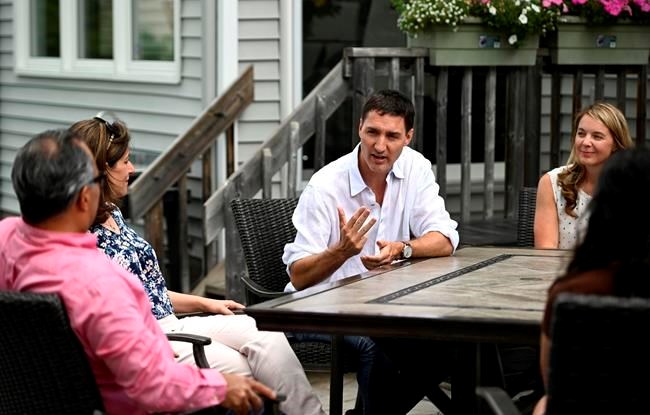OTTAWA — Canadians who pay the federal carbon price got a midsummer money drop today with the first half of their annual "climate action incentive" payment deposited into their bank accounts.
Prime Minister Justin Trudeau is promoting the payments in various whistle stops in the Ottawa area today, calling them a way to "bring Canadians along" in the fight against climate change without causing them financial hardship.
People who filed their 2021 tax returns in Ontario, Alberta, Manitoba and Saskatchewan received the deposits Friday, to cover half the amount they can expect to receive for the 2022-23 fiscal year.
The rest will come in quarterly payments in mid-September and mid-January.
All other provinces have their own carbon pricing systems and are not involved in the federal version.
It is the first time the carbon price cash is 小蓝视频 sent quarterly instead of in a single lump sum hidden in tax rebates as the federal government seeks to make the payments more visible.
The success of that effort may be limited however since many Canadians saw the deposit unclearly labelled in their online accounts including as "federal payment," "Canada Fed" and "EFT Credit Canada." Some on social media queried what the payments were for as others shared the various ways they were labelled depending on which financial institution you bank with.
"Mine showed up as ‘Direct Deposit Federal Payment CANADA,'" tweeted Lori Hausauer of Alberta. "I like that Canada was all caps. Just in case I forget where I live, I guess."
That confusion was even evident as Trudeau visited a family in a planned photo op in an Ottawa suburb Friday afternoon.
Reza Matin, a father of two and software test developer, welcomed Trudeau to his home, and when asked by the prime minister if they received their payment, Matin said he got notice of a deposit for $372.50 but stumbled over who the payment came from.
"It said it was from—" he said, pausing.
Trudeau filled in the answer, saying it said it was from the federal government, and then Matin agreed.
The rebates are designed to prevent families from 小蓝视频 worse off overall due to the carbon price while still having an incentive to cut their carbon price costs by driving less, installing better furnaces or solar panels, or upgrading windows, doors and insulation.
The amounts vary by province based on the estimated carbon levy consumers will pay this year, with the annual payments for a family of four hitting $745 in Ontario, $832 in Manitoba, $1,079 in Alberta and $1,101 in Saskatchewan.
The payments in Saskatchewan and Alberta are higher mainly because they rely mostly on natural gas and coal for electricity while Ontario draws most of its power from nuclear and hydro, and Manitoba almost entirely from hydro.
The carbon levy applies to fossil fuels but not energy sources that are low or non-emitting.
Environment Minister Steven Guilbeault says the rebates cover more than the added cost of the levy for about eight in 10 Canadian families.
The carbon price is now $50 per tonne of emissions produced, which adds 11 cents to a litre of gasoline, 13 cents to a litre of diesel and 10 cents to a cubic metre of natural gas.
The federal government expects to return more than $7 billion to Canadians from the carbon levy this year.
The levy will increase by $15 a tonne each year through to 2030, adding another 3.3 cents to a litre of gas annually.
This report by The Canadian Press was first published July 15, 2022.
———
This story was produced with the financial assistance of the Meta and Canadian Press News Fellowship.
Mia Rabson and Erika Ibrahim, The Canadian Press

